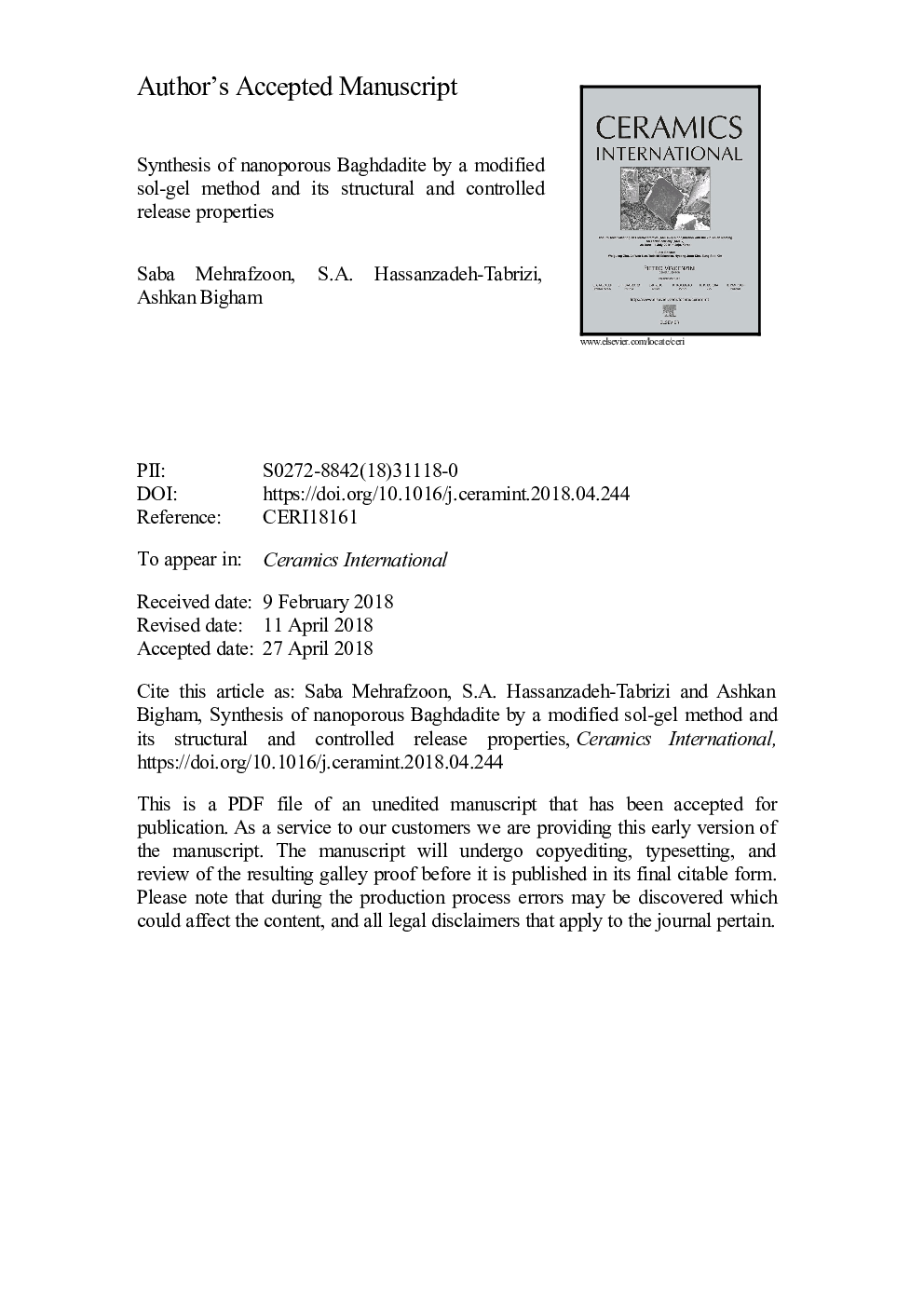| Article ID | Journal | Published Year | Pages | File Type |
|---|---|---|---|---|
| 7886609 | Ceramics International | 2018 | 29 Pages |
Abstract
In this research, a bimodal nanoporous Baghdadite (NB) (Ca3ZrSi2O9) was prepared by a modified sol-gel method using P123 as a surfactant. The effects of P123's contents on the structural and textural properties as well as the drug delivery behavior of NB were assessed in vitro. The usage of P123 offered a new route for the synthesis of NB. The synthesized NB samples with different amounts of P123 were studied through X-ray diffraction (XRD), Fourier transform infrared spectra (FTIR), N2 adsorption-desorption, field emission scanning electron microscopy (FESEM) equipped with energy-dispersive X-ray analysis spectroscopy (EDAX) and transmission electron microscopy (TEM). The results showed that a single-phase Baghdadite was obtained by this new method at the calcination temperature of 800â¯Â°C. It was found that an increase in P123's content up to 0.025â¯mol changed the morphology of NB samples from mountain-like to needle-like. The potential application of NB samples as drug delivery agents was assessed by estimating their release properties up to 240â¯h. This research revealed that the synthesized Baghdadite could be used as a potential nanoporous carrier with controlled release capability in bone tissue regeneration.
Related Topics
Physical Sciences and Engineering
Materials Science
Ceramics and Composites
Authors
Saba Mehrafzoon, S.A. Hassanzadeh-Tabrizi, Ashkan Bigham,
